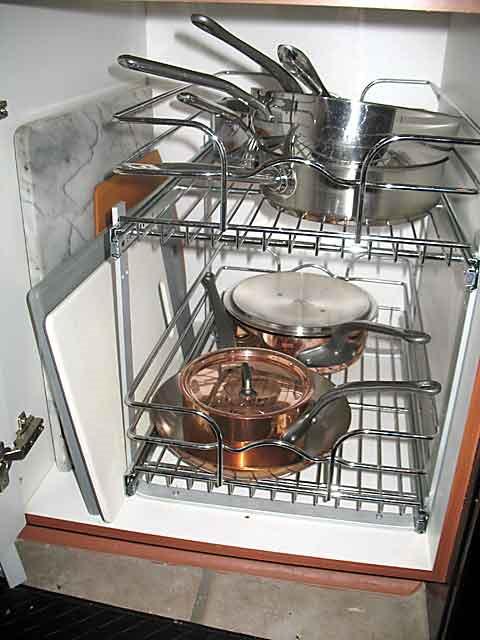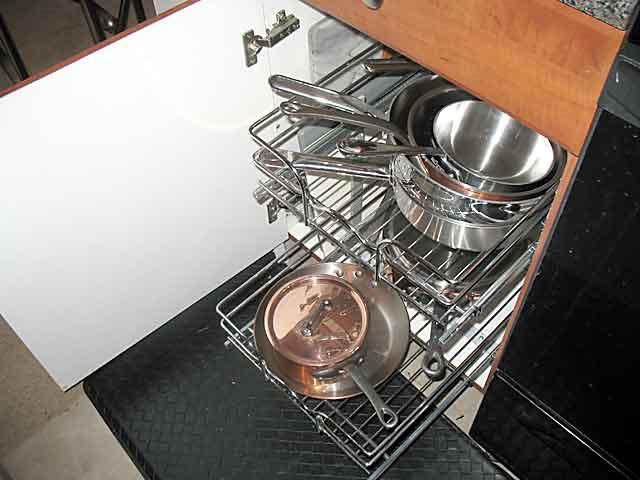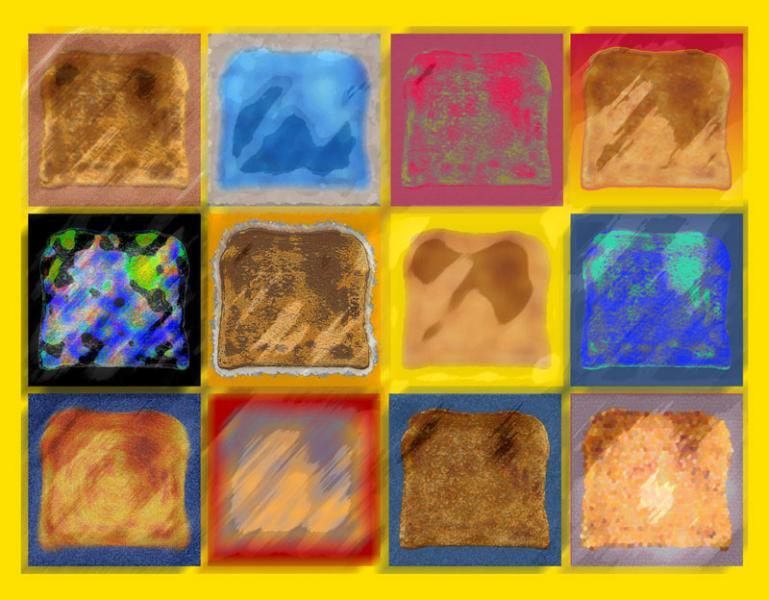-
Posts
5,118 -
Joined
-
Last visited
Content Type
Profiles
Forums
Store
Help Articles
Everything posted by JAZ
-
I bought the "handmade" TJ corn tortillas on the recommendation of Russ Parsons in this article on quesadillas, but I was very disappointed. They were stale tasting and rubbery. I didn't notice when I bought them that they were only a few days from the "best by" date, but still, I expected better.
-
I like them plain -- my oldest sister used to bake them, and I got into the habit of eating them that way back in my grad school days. I don't like them sweetened; maple syrup or sugar added to sweet potatoes makes me think they can't decide whether to be a vegetable or a dessert. And I'm not a fan of sweet potato fries -- I think they just have too much moisture and sugar to make that work well. But all that being said, there are a couple of ways I "dress up" sweet potatoes that I think work really well. One is a dish that we've used for Valentine's Day cooking classes -- steamed sweet potatoes riced and mixed with cream and butter, topped with steamed red beets that have been cut into brunoise and tossed in a saute pan with some butter. The colors are gorgeous and the flavors are great together. Somewhere I came across a recipe for roasted sweet potato chunks and onions that were tossed with grated parm and minced fresh rosemary, and I've stolen the flavor combination for sweet potato croquettes with those ingredients. They don't suck.
-
It was not part of our usual Thanksgiving (or any other) dinner, but I had it at relatives' houses when we were away for Thanksgiving. I always thought it was okay, but not great. However, green beans and mushrooms are a great combination, and a little cream never hurts the dish either. So I've made a "homemade" version, I guess. The one element that I've always really liked, though, was the canned "onion rings" or whatever they're called. Everything in my experience tells me I should be able to make something "better," and should want to, but the thing is, I don't even want to try.
-
Maggie -- I'm slapping my forehead with a big "Duh!" I always have skewers of various lengths around. I can't believe I never thought of using them. My spoons have so many marks I'm having a hard time telling which ones I'm supposed to be paying attention to.
-
Do you reduce on high heat? I can reduce 2 cups of (water-based) liquid by half in my usual sautepan (about 9 inches in diameter) on high heat on my coil electric stove in 4-5 minutes -- so it's longer, but not by much. Not to say that recipe times aren't inaccurate, but I can't imagine it taking 15 minutes to reduce a couple of cups of sauce by half, unless one is trying to do it in a deep, narrow pot, or doing it at a bare simmer.
-
Kim, if you stick the handle of a wooden spoon into your pot and make a line with a sharpie at the liquid level, then it's very easy to figure out when you've boiled off about half -- just use the spoon handle to measure.
-
I installed this in my cabinet (more precisely, a friend did). I'm very happy with it. For my pantry shelves, I got single pull-out shelves that attach to the existing shelves. I don't have photos, but here they are. They work well in the pantry but I wasn't sure they'd be strong enough for cookware.
-
I was surprised recently when I looked at the section on spices in McGee's On Food and Cooking to read that he not only doesn't recommend toasting spices before grinding but even recommends chilling spices and grinder before grinding. His reason is that heat increases the volatility of the aroma compounds so you lose flavor. The last time I ground some cumin, I figured I'd see if he was right. I usually toast cumin but didn't this time. The result was cumin that was less aromatic, but equally flavorful. More interesting was the difference the next time I used it (I generally grind enough for a couple of weeks). After a couple of days, I would say that the untoasted cumin had more flavor and smell than toasted. I'm going to skip toasting from now on.
-
Reduction times are very difficult to estimate because they depend not only on the amount of liquid but on the diameter of the pan one uses.
-
Do you have a recipe or a link, Jaymes? I for one would be really interested in it.
-
I love to cook, and I like my own cooking. That being said, when I'm cooking for a class or an event, the last thing I want to do is eat what I've made. Not that it's not good. But I remember seeing Mario Batali on some talk show when the host asked him what his favorite food was. He said (paraphrasing): "When I've been the kitchen all day, my favorite food is whatever someone else makes." I second that.
-
I think cooking times -- either in the oven or on the stove -- are a different animal from prep times, or "start to finish" times. While cooking times will vary, depending on such things as the accuracy of your oven, your cookware, your stove top, your idea of "medium" heat, it's still important to give some time guidelines to the recipe readers, but also to let them know other cues to tell when something is done. So, "bake for 30 minutes, or until golden brown on top and set in the middle" seems like a perfectly acceptable instruction -- I know that it will take around 30 minutes, so I'll start checking at 20 or 25. But I also know what I'm looking for, so if my oven is off, I can still tell when the item is done. As far as prep goes, not only is there everything others have already mentioned that affects prep time, but there's familiarity with a recipe too. The first time you make something, everything takes longer. The second and third time, you get more familiar, and you learn places where you can double-task -- so, for instance, you know that you can start the pasta cooking and have the mushrooms chopped (or whatever) by the time the pasta is done. When we write recipes for students, we never include total time or prep time, but we always include cooking times -- we just add visual and tactile clues so the students have a way to double check times.
-
Don't get me started: if I had a dime for every stupid thing said by cooking instructors -- in person, on TV, on the radio or on blogs -- I'd be a rich woman. Examples? Ina Garten telling her audience to add oil to pasta water to keep the pasta from sticking Chris Kimball on America's Test Kitchen telling his audience that meat chopped up in a food processor is "ground" Lynn Rosetto Kaspar equating "dumpling" with "dim sum" Joanne Weir saying that sorbet is "just the same" as granita, it's just "a different kind" of sorbet Michael Ruhlman saying that the difference between bread dough and pasta dough is that in pasta, egg takes the place of water A cooking instructor I know telling his students that white button mushrooms "turn into" cremini as they grow A different cooking instructor I know explaining that the difference between kosher salt and sea salt is that kosher salt is mined And that's just off the top of my head.
-
It seems to me that there are two problems with this approach: first, the bacon or pancetta wouldn't cook through in the time the macaroni and cheese takes to cook, and second, it would result in puddles of rendered fat in the dish.
-
Years ago, I had some similar constraints and made a dressing with bacon, onion and lots of mushrooms. I probably used sherry and chicken stock to moisten. I'm pretty sure I just used white bread for the starch. (Everyone liked it, by the way.)
-
I don't go to the trouble of making cups, but I've been making peanut butter balls every year for Christmas for ages. One year I made something else and my brother-in-law hounded me for months until I finally gave up and made a batch for him. My filling is Jif extra chunky and powdered sugar, and I dip in dark chocolate. A couple of years ago, I decided I wanted something a little different and came up with a combination Butterfinger-Reese's which was really great. Here's the recipe for the Butterfinger part; if anyone is interested I can post the "Reese's" filling, but there are recipes all over that are very similar to what I make.
-
I'd suggest the New Belgium 1554 -- it's porter-ish, rich and very well-balanced. If you want something hoppier, I recently tried Sierra Nevada's Northern Hemisphere Harvest and was very impressed. Of the others on the Imbibe list, I've tried the Dogfish Raison d'Etre; for me it was too sweet.
-
I've never been a big fan of milk chocolate, which used to mean that I was out of luck when it came to mainstream candy bars. It used to be that the only mainstream, industrial candy bar that came in dark chocolate was Mounds -- which, since I don't like coconut, didn't help me at all. The past few years have seen more bars in dark chocolate, though. I think the first was the Milky Way, with a few more following suit. Now you can find Snickers and Reese's in dark chocolate, and even M&Ms come in dark now. The latest I've found was dark chocolate Kit Kats, which may very well be my downfall (they're really good). If Butterfingers ever expand to dark chocolate, I'll be in heaven. Anyone else like this trend? Are there any other bars out there that have made the switch that I should know about?
-
One thing to keep in mind is that if you heat your cooking fat to the proper temperature when frying, your food really won't absorb much of it.
-
As I understand brining, what matters is not merely whether the flavor molecules are water soluble, but how big those molecules are. Not very many are small enough to pass through the cell walls.
-
This blog post from NPR written by Linda Holmes seems to be a fairly balanced summary of the situation. She ends on a voice of reason: Good luck with that.
-
I'm having a very hard time understanding how any of these examples is parallel to the case of salt. From everything I've read on the subject, which is quite a bit, the only proven link between sodium consumption and health is that some people (about a third) who already suffer from high blood pressure are salt-sensitive. That's a far cry from saying that sodium is "bad" for everyone, even from saying that excess sodium "causes" hypertension. Would you say that since some people are lactose-intolerant, the government should regulate our dairy intake? Since some people are allergic to nuts, shellfish, etc., the government should ban those foods? Since some people have celiac disease, the government should regulate gluten consumption for all?
-
Why do you say this? In what way does eating salt lead to obesity? Can you cite studies?
-
Erin, what are you tiao donuts? Your letter reminds me of my walk to the light rail station (on my way to work) when I lived in San Francisco. I walked by this great little bakery that made excellent croissants and pastries. In my case it wasn't so much time as it was calories, but when I had time, I'd just stand in front of the shop and smell the great aromas. Not as satisfying as eating the goodies, but it always made me happy.
-





